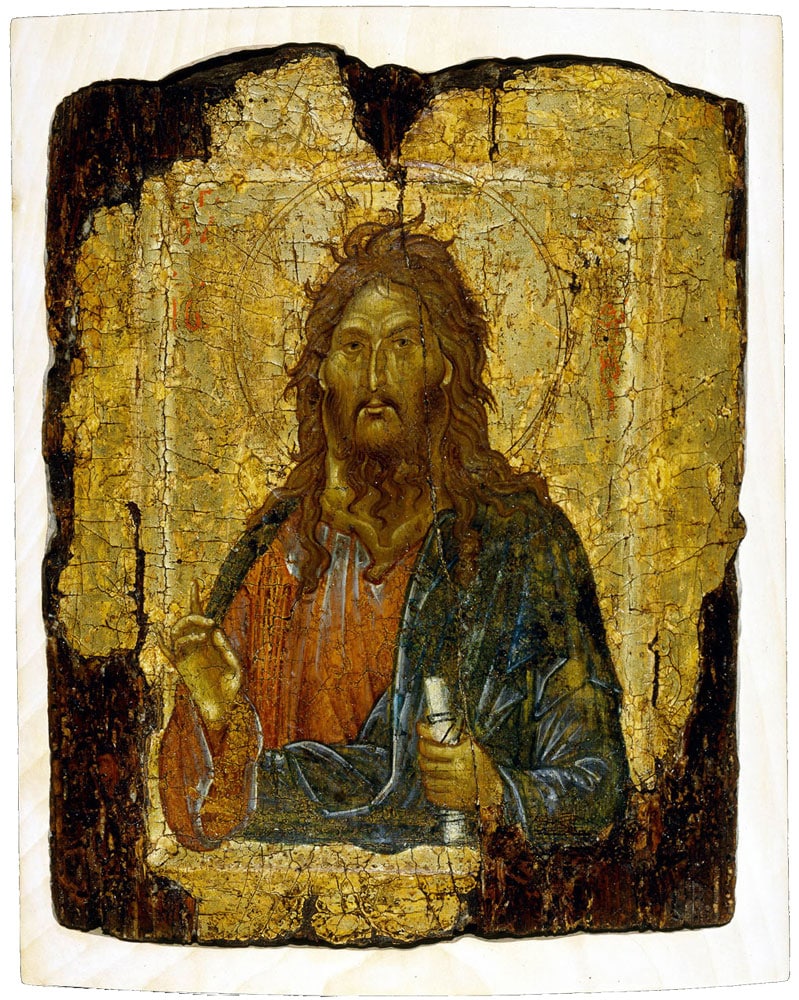The icon is painted in egg tempera with gold leaf on a wood panel primed with gesso over linen; the panel has a raised border. The half-figure, slightly turned to his right, is set against a gold background; he wears a green mantle and red tunic over a hair shirt, holds a tied scroll in his left hand and raises his right in blessing. The halo is defined by two concentric circles inscribed into the gold ground. Both the halo and painting overlap the raised border in places. He is identified by a Greek inscription in red on either side of the halo: Ο ΑΓΙΟΣ (‘St John’) to the left and Ο ΠΡΟΔΡΟΜΟΣ (‘the Forerunner’) to the right. The panel has suffered considerable damage from woodworm and has split and been re-joined. The painted surface has been lost from three of the corners.
Many Byzantine representations of St John the Baptist depict him as emaciated and unkempt, as an ascetic and a man of the wilderness. By contrast, this icon shows him as a calm and noble figure despite his disheveled hair and straggly long beard. The figure has a strong presence, seeming to come forward from the panel: the illusion is created by the firm modeling of the flesh and garments against the unrelieved gold ground and by the extension of the figure and the halo on to the raised border.
The dating depends on seeing stylistic parallels with mosaics and frescoes in the parekklesion of the Church of St Mary Pammakaristos, now the Fetiye Camii, in Istanbul. If accepted, the connection suggests both a Constantinopolitan provenance and a date of around 1300. The nobility of the figure is also in line with the grand and monumental mosaic of the Deisis in St Sophia (datable to 1261) where St John the Baptist is on the right of the panel in the South Gallery.
Literature: R. Cormack and S. Mihalarias, ‘Two icons, more or less Byzantine’, Apollo 14 (1986), 6–10; D. Buckton, ‘A Byzantine icon for the British Museum’, National-Art Collections Fund Review (1987), 84–5; M. Acheimastou-Potamianou (ed.), From Byzantium to El Greco. Greek Frescoes and Icons (exh. cat., Royal Academy of Arts), Athens, 1987, no. 11, 152; D. Buckton (ed.), Byzantium: Treasures of Byzantine Art and Culture from British Collections (exh. cat., The British Museum), London, 1994, no. 206, 192; R. Cormack, Icons, London, 2007 (repr. 2014), no. 15, 116.
Robin Cormack
